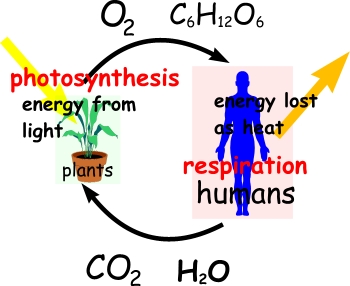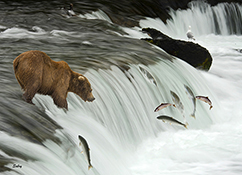ecolacy means ecological literacy: it is a dialectic between numerate and literate evidence that are best interpreted in an ecolate perspective.
Ecolacy: a dialectic
The challenges of technology
and
necessity of human dignity.
Conceptualizing the conflict over competing resource uses:Adaptations & Urban Planning Myths
Columbia River watershed, "large ecosystems:"
Lee's organizational schema,
![]()
ecolacy means ecological literacy: it is a dialectic between numerate and literate evidence that are best interpreted in an ecolate perspective.
Criteria Table 1:
then what?\
| criteria | numerate |
literate |
| consistent | ||
| compatible |
![]()
The challenges of technology and necessity of human dignity.
Technology has the ability to catalyze changes, or to speed-up and bring about impacts at an ever increasing rate of speed, to which human's -- or so Hardin argues -- are more or less unreliable in their responses to technological affects.
Consider the affects of automotive transportation, super-tankers, electricity, or even fire on human behavior.
Compare these modern technical changes
to the impacts of these electronic techniques on natural conditions.

Problem Solving Table 2:
Every ecological problem has three dimensions: Physical, Biological, & Social
| Dimensions | criteria | numerate | literate |
| Physical | ||
| Biological | ||
| Social |
![]()
The Grand Coulee Dam, Washington State.
Are large dams
on rivers and example of technological catalysts in that they spur-on the economic growth of a region?
Columbia River watershed is a drainage basin that extends
into Canada and five states in the Pacific Northwest.
How has the Columbia River come to symbolize the conflict between economics and ecology?
- Physical, basin for drainage aerial sizes, elevations, climate.
- Biological, biogeographical provinces habitat, species, genetic diversity.
- Social, urban, rural and wild population, women's status.
What are the economic benefits derived from the river and the watershed?Describe the ecological value and biological wealth of the Columbia River basin and the ecosystem services derived from these natural assets of the watershed:
What is the reason for needing to discover a more sustainable use of the Columbia River?
Consider several examples of each from the readings with respect to the Columbia River and the mountain ranges that give rise to this vast tributary system:
Conceptualizing
the conflict over competing resource uses:
| dimensions | features | The resources | description | sources |
| Physical, | the river: | |||
| Biological, | the fisheries & wildlife: | |||
| Social, | the people, cities, industries: | |||
| ecolate, | consequences of impacts, & then what? |
Salmon habitat, California coastal river.
Columbia River watershed, "large ecosystems:" multi-jurisdictional, international.
Canada |
|
Grand Coulee Dam (11) USA |
|
Bonneville Dam (1) |
|
| Snake river watershed (Idaho) | |
| The Columbia River Basin is an international watershed in that the Canadian and United States border crosses the area just south of the Okanagon Valley and River in British Columbia. The almost twenty dams on this river interfere with the passage of fish from the ocean and estuary into the tributaries upriver where they must return to spawn another generation of fish. | |
Kai Lee's organizational schema, his approach to the basin's ecological problems.
1 learning from the past
2 correcting errors
3 understanding and applying adaptive management
4 participating in bounded conflict
5 devising action plans and assessing the expected outcomes.
Contrasting Kai Lee's with Hardin's language.
| New terms: | old terms: |
+ Bounded conflict |
|
Social Learning |
Adaptational & Urban Planning Myths
What does it mean to be adaptive in a biologically and ecologically sensitive way?
![]()
Table for assessing ways to solve ecological problems:
| Dimensions | criteria | numerate | literate | ecolate |
| Physical | |||
| Biological | |||
| Social |
example: anadromous fishes.

Salmon require cold clear water in rock bedded streams flowing across numerous acres of forested land for sufficient eggs to grow into fry and from fry into fingerlings or else they will go extinct in their range.
They stay close to home streams as young and live in and along
the river and tidal estuary habitat as they mature. Salmon spend their
adult lives at sea returning to home rivers to spawn from spring to late
summer and early fall.
Vehicle of ecological services
habitat human requirements end uses
| acronym | ecosystem's features | importance | numerate estimate | use for ecosystem service |
| W | water | initial necessity; | 1 gallon to 5 quarts daily | health, hygiene, electricity |
| E | energy | secondary necessity, | 2500 calories daily | food, fuel, electricity, transport |
| A | air | initial necessity, | 55 cubic feet, minutes | combustion, respiration |
| L | land | tertiary necessity, | 100 - 1000 square feet | functions, forage, storage |
weal, old English from the Germanic root word for wealth; wald, or forest, or wooded landscape.
See The Weald in southern England.
Ecosystems and adaptive strategies • Creating
a more ecological future
The human dimensions in ecological situations
The challenges of technology, Lee. pp. 18-50.
The necessity of human dignity, Bronowski. pp. 49-80.
Adaptiveness & Urban Planning Myths, Lee. pp. 51-86.
